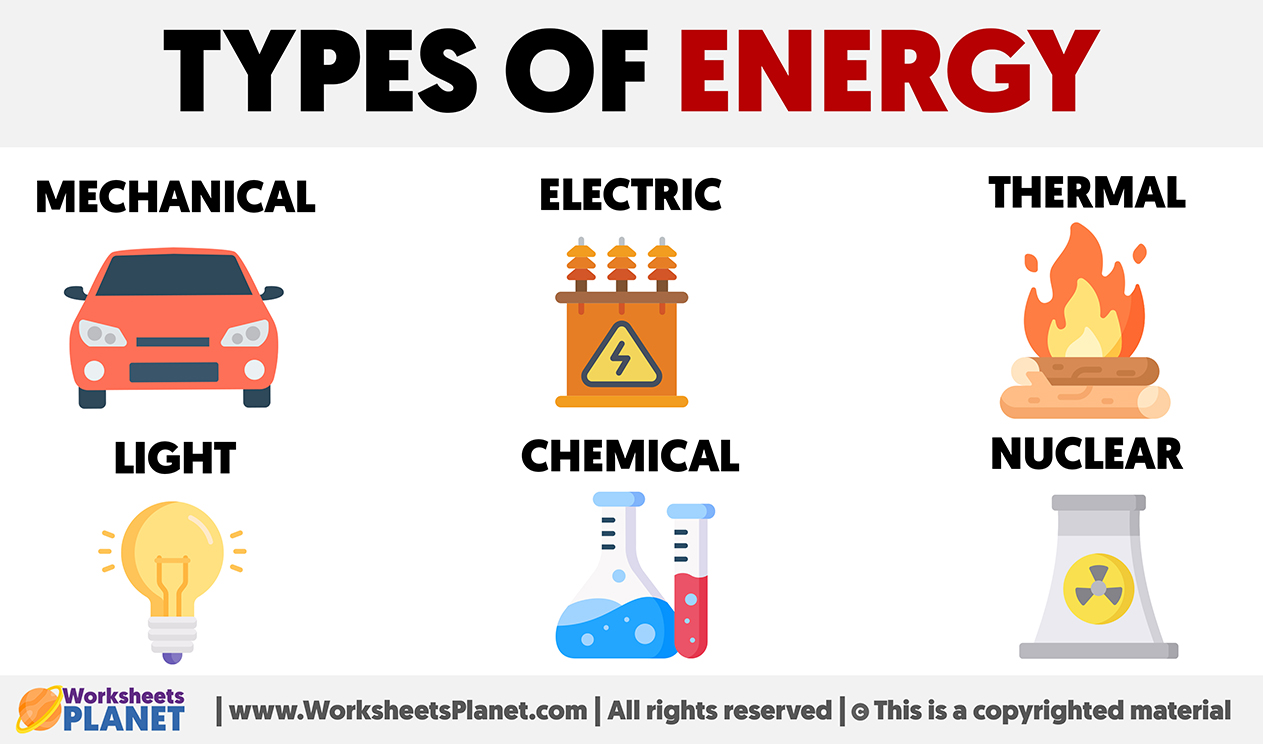
- Mechanical Energy:
Resulting from motion or position, mechanical energy includes kinetic energy (motion) and potential energy (position) in objects. It’s crucial in various activities, from moving vehicles to pendulum swings.
- Electric Energy:
Flow of electrons constitutes electric energy, harnessed for diverse applications. It powers devices, facilitates communication, and is essential in modern technology, generated from sources like coal, wind, or solar.
- Thermal Energy:
Thermal energy is the internal energy of a system due to the movement of its particles. It manifests as heat and is crucial for processes like cooking, heating homes, and powering steam engines.
- Light Energy:
Emanating as electromagnetic waves, light energy is visible radiant energy. Essential for vision, photosynthesis, and communication technologies, it travels in waves and exhibits both particle and wave characteristics.
- Chemical Energy:
Stored in the bonds of atoms and molecules, chemical energy releases during reactions. Vital for sustaining life, it powers biological processes, fuels combustion, and is transformed in batteries, providing portable energy.
- Nuclear Energy:
Released during nuclear reactions, nuclear energy involves the splitting (fission) or combining (fusion) of atomic nuclei. A powerful and controversial source, it’s harnessed for electricity, medical applications, and military purposes.

